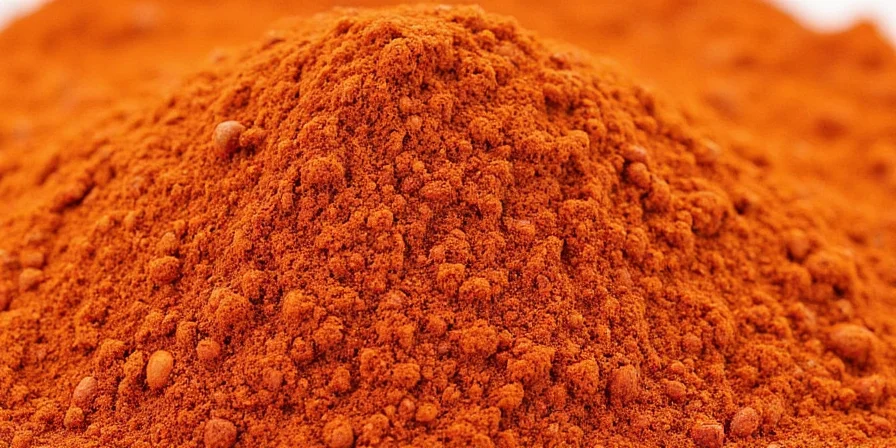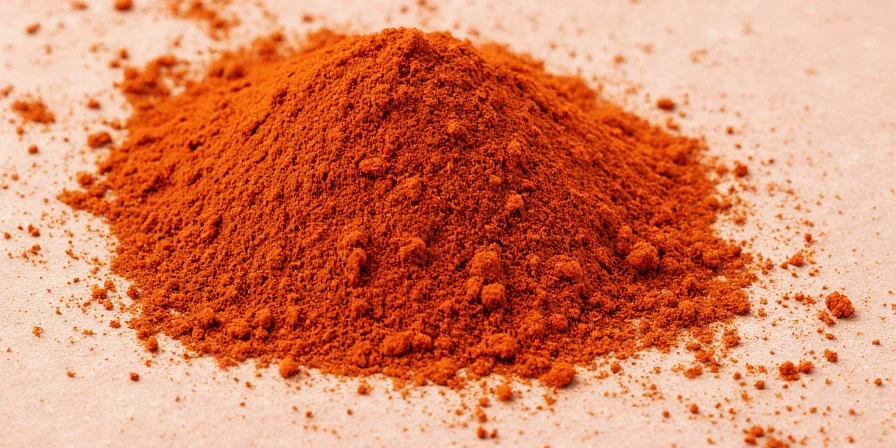Smoked paprika powder is a Spanish spice made from red peppers dried over oak fires, giving it a distinct smoky flavor that regular paprika lacks. Unlike standard paprika which is air-dried, smoked paprika undergoes a 10-15 day smoking process that infuses deep, campfire-like notes into your dishes. Whether you're wondering what is smoked paprika, how to use it properly, or why chefs prefer it for certain recipes, this guide delivers immediate answers to your most pressing questions.
Smoked Paprika vs Regular Paprika: Key Differences
The fundamental difference between smoked paprika and regular paprika lies in the drying process. While regular paprika is simply air-dried, authentic smoked paprika (pimentón) is slowly smoked over oak wood fires for up to 15 days. This traditional Spanish method creates complex flavor compounds that standard paprika cannot replicate. The smoking process preserves more natural sugars in the peppers while adding distinctive wood-fired notes.

| Type | Heat Level | Flavor Profile | Best Uses |
|---|---|---|---|
| Sweet (Dulce) | Mild | Earthy, sweet, slightly fruity | Creamy sauces, seafood, deviled eggs |
| Bittersweet (Agridulce) | Moderate | Balanced sweet-bitter notes, complex depth | Stews, tomato sauces, paella |
| Hot (Picante) | Spicy | Smoky with a fiery kick | Rubs for meats, spicy marinades |
Immediate Uses: How to Use Smoked Paprika Properly
Unlike regular paprika, smoked paprika's flavor is delicate and can turn bitter when exposed to high heat for too long. For best results:
- Bloom in oil first: Heat 1 tsp smoked paprika in 1 tbsp olive oil over medium-low heat for 30 seconds before adding other ingredients
- Add late in cooking: For soups and sauces, stir in during the last 5-10 minutes of cooking
- Avoid direct high heat: Never sprinkle directly on food under broilers or on high-heat grills
- Start with less: Use half the amount you'd use of regular paprika, then adjust to taste
Why Smoked Paprika Tastes Bitter (And How to Fix It)
Bitterness in smoked paprika usually comes from three sources:
- Overheating: The delicate smoked compounds break down at high temperatures
- Old spice: Smoked paprika loses its complexity after 12-18 months
- Overuse: Its concentrated flavor can overwhelm when used in standard paprika quantities
Fix bitter dishes by adding acid (lemon juice or vinegar) or sweetness (honey or sugar) to balance the flavors.
Storage Secrets: How to Keep Smoked Paprika Fresh Longer
Smoked paprika degrades faster than regular paprika due to its complex flavor compounds. To maximize shelf life:
- Store in an airtight container away from light and heat (not above your stove!)
- Refrigerate in hot climates or if keeping longer than 6 months
- Buy small quantities (2-4 oz) unless you use it frequently
- Check for freshness by rubbing a small amount between fingers—if aroma is weak, it's time to replace
Authentic Spanish Smoked Paprika: What to Look For
True Spanish smoked paprika carries the Pimentón de la Vera PDO (Protected Designation of Origin) certification. This guarantees it was produced in Extremadura, Spain using traditional oak-smoking methods. When shopping:
- Look for "Pimentón de la Vera" on the label
- Check for Dulce (sweet), Agridulce (bittersweet), or Picante (hot) designations
- Avoid products labeled simply "smoked paprika" without Spanish origin
- Higher quality products will specify the pepper variety (usually ñora or jaranda peppers)
Common Mistakes When Substituting Smoked Paprika
Many home cooks make these critical errors:
- Using equal amounts: Smoked paprika is more potent—use 50-75% of the regular paprika amount called for
- Adding too early: Its delicate smoke flavor dissipates with prolonged cooking
- Mixing with liquid smoke: This creates an artificial, chemical-like flavor
- Assuming all smoked paprikas are equal: Spanish varieties differ significantly from Hungarian or American "smoked" paprikas
Where to Buy Authentic Smoked Paprika
For genuine Spanish smoked paprika:
- Specialty Spanish markets (look for La Dalia, Piquillo, or Vera brands)
- Reputable online spice retailers with freshness guarantees
- High-end grocery stores with dedicated spice sections
- Avoid generic supermarket brands that don't specify Spanish origin
Frequently Asked Questions
Can I substitute smoked paprika for regular paprika?
Yes, but use only 50-75% of the amount called for since smoked paprika has more concentrated flavor. For Hungarian dishes like goulash where paprika is central, regular paprika is preferable as smoked would alter the traditional flavor profile.
How long does smoked paprika last?
Properly stored in an airtight container away from light and heat, smoked paprika maintains peak flavor for 12-18 months. After this, it doesn't spoil but loses its distinctive smoky complexity. The color will fade from vibrant red to dull brown as it ages.
Why is my smoked paprika not smoky?
If your smoked paprika lacks smokiness, it's likely not authentic Spanish pimentón. Many brands labeled "smoked paprika" are simply regular paprika with liquid smoke added. True Spanish smoked paprika gets its flavor from actual wood-smoking during drying. Check for Pimentón de la Vera PDO certification on the label.
What dishes absolutely need smoked paprika?
Authentic Spanish paella, chorizo sausage, and patatas bravas require genuine smoked paprika for traditional flavor. In non-Spanish cuisine, it elevates deviled eggs, barbecue sauces, and roasted vegetable dishes where subtle smokiness enhances without overpowering.
Pro Flavor Pairings for Maximum Impact
Smoked paprika works best with complementary flavors that enhance rather than compete with its delicate smokiness:
- Lime juice + smoked paprika: The acid brightens the smoky notes (perfect for seafood)
- Garlic + olive oil + smoked paprika: Classic Spanish base for sauces and stews
- Tomato paste + smoked paprika: Deepens flavor in braises without adding heat
- Honey + smoked paprika: Creates complex sweet-smoky glazes for meats
- Cumin + coriander + smoked paprika: Builds layered spice profiles in rubs
Final Recommendation
For authentic results, invest in genuine Spanish Pimentón de la Vera with PDO certification. Keep a small container in your spice rack for immediate access, but store your main supply in the refrigerator to preserve that precious smoky flavor. Remember: when using smoked paprika, less is more—the goal is subtle complexity, not overwhelming smoke. A properly used 1/4 teaspoon can transform an ordinary dish into something extraordinary.











 浙公网安备
33010002000092号
浙公网安备
33010002000092号 浙B2-20120091-4
浙B2-20120091-4